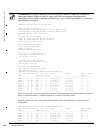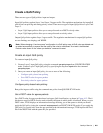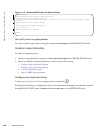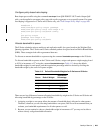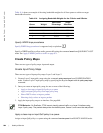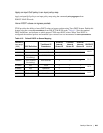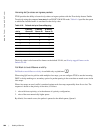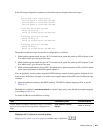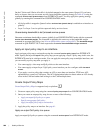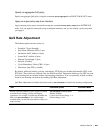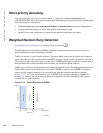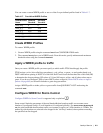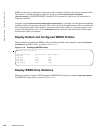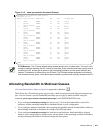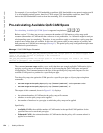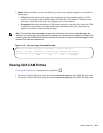868 | Quality of Service
www.dell.com | support.dell.com
On the C-Series and S-Series all traffic is by default mapped to the same queue, Queue 0. If you honor
dot1p on ingress, then you can create service classes based the queueing strategy in Table 41-6 using the
command
service-class dynamic dot1p from INTERFACE mode. You may apply this queuing strategy
globally by entering this command from CONFIGURATION mode.
• All dot1p traffic is mapped to Queue 0 unless
service-class dynamic dot1p is enabled on an interface or
globally.
• Layer 2 or Layer 3 service policies supersede dot1p service classes.
Guaranteeing bandwidth to dot1p-based service queues
Guarantee a minimum bandwidth to queues globally from CONFIGURATION mode with the command
service-class bandwidth-weight. The command is applied in the same way as the bandwidth-weight
command in an output QoS policy (see Allocate bandwidth to queue on page 863). The
bandwidth-weight
command in QOS-POLICY-OUT mode supersedes the
service-class bandwidth-weight command.
Apply an input policy map to an interface
Apply an input policy map to an interface using the command service-policy input from INTERFACE
mode. Specify the keyword
layer2 if the policy map you are applying a Layer 2 policy map; in this case, the
INTERFACE must be in switchport mode. You can apply the same policy map to multiple interfaces, and
you can modify a policy map after you apply it.
• You cannot apply a class-map and QoS policies to the same interface.
• You cannot apply an input Layer 2 QoS policy on an interface you also configure with
vlan-stack
access
.
• If you apply a service policy that contains an ACL to more than one interface, FTOS uses ACL
optimization to conserves CAM space. The ACL Optimization behavior detects when an ACL already
exists in the CAM and rather than writing it to the CAM multiple times.
Create Output Policy Maps
Create Output Policy Maps is supported only on platform e
1. Create an output policy map using the command policy-map-output from CONFIGURATION mode.
2. Once you create an output policy map, do one or more of the following:
• Apply an output QoS policy to a queue
• Specify an aggregate QoS policy
• Apply an output policy map to an interface
3. Apply the policy map to an interface. See page 61.
Apply an output QoS policy to a queue
Apply an output QoS policy to queues using the command service-queue from INTERFACE mode.



